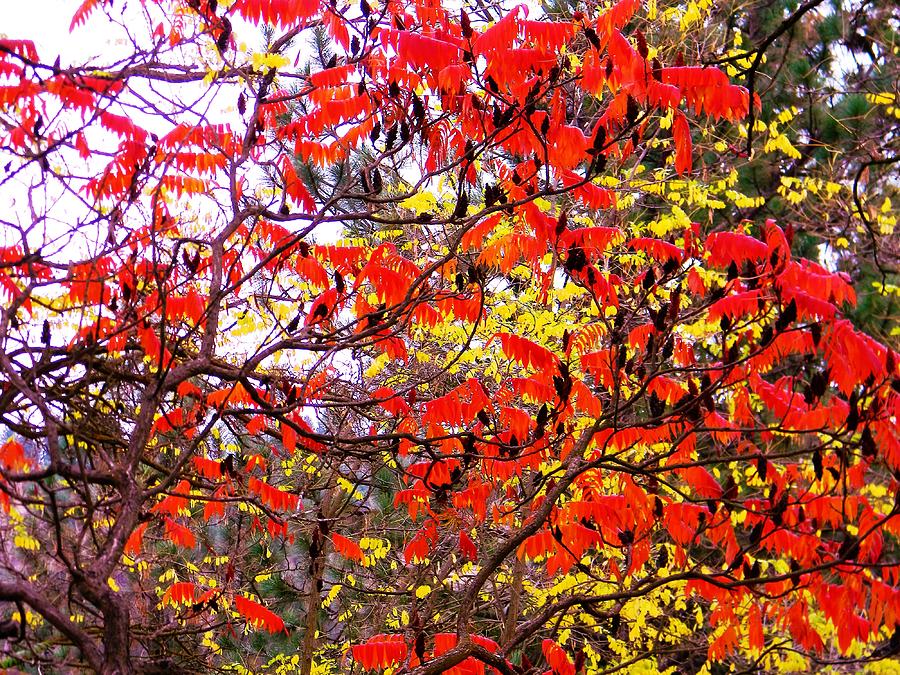When autumn arrives, one of the most striking trees as its leaves change color is the American sycamore (Platanus occidentalis). With its massive size and broad, mapled-shaped leaves, a sycamore in fall foliage is a sight to behold.
In this article, we’ll look at why sycamore trees make such an impression in autumn, what to expect from their fall color, and how to incorporate them into your landscape for seasonal interest.
Why Sycamores Stand Out in Fall
There are several reasons why sycamores draw the eye each autumn:
-
Their large size – Sycamores are massive trees, averaging 75-100 feet tall and equally wide. Their immense height and broad canopy command attention.
-
Leaf size – The leaves are equally oversized, typically 4-10 inches wide. When these huge leaves transition color in fall they’re hard to miss.
-
Bright fall hues – The foliage transforms to vibrant shades of yellow and golden brown in autumn before dropping. This bright color is eye-catching against the tree’s white mottled bark.
-
Dramatic shedding – Sycamores lose their leaves quickly in fall compared to other trees Seeing hundreds of its huge leaves carpeting the ground is an arresting sight
With their commanding presence and radiant fall coloring, it’s no wonder sycamore trees steal the show each autumn.
What to Expect from Sycamore Fall Color
Sycamore leaves start changing color in early fall, transforming through vibrant yellows, oranges, and browns before dropping. Here’s what to expect:
-
Early to mid-October – Leaves start changing from green to pale yellow.
-
Mid to late October – Foliage transitions to more brilliant yellow tones, some leaves taking on orange hues.
-
Early November – Deeper golds and browns emerge as cooler weather arrives.
-
Mid-November – Most leaves drop quickly over 1-2 weeks, peppering the ground with color.
-
Late fall – Bark’s white patches become more pronounced with foliage gone, especially striking after leaves fall.
Like most deciduous trees, cooler nighttime temps initiate the color change by slowing chlorophyll production. But sycamores shed their massive leaves rapidly compared to say, oak or maple trees.
When planning fall activities like leaf peeping hikes or photoshoots, aim for mid-October to early November to catch sycamores at their most radiant.
Ideal Growing Conditions for Vibrant Color
Several environmental factors affect the brightness and duration of sycamore autumn foliage:
-
Sun exposure – Full sun is ideal for the boldest fall color. Shaded trees tend to turn duller yellow.
-
Soil moisture – Adequate water in summer and fall results in better color. Drought stress can cause leaves to drop prematurely.
-
Cool nights – Chilly evenings in the 40s°F trigger leaves to start changing. Sudden temperature drops speed color change.
-
Dry weather – Low humidity and little precipitation allows leaves to remain on branches longer to extend color duration.
-
Low pollution – Places with cleaner air see brighter leaf pigments. Pollution causes muted fall colors.
If you want dazzling sycamore foliage in autumn, select a planting spot that meets these criteria. Proper care like watering during dry periods will also maximize fall beauty.
Incorporating Sycamores in Your Landscape
As evidenced by their radiant fall displays, sycamores make a statement in any landscape. Here are tips for planting them:
-
Select areas with plenty of room for their massive size, like parks and acreages. They need space!
-
Pick a spot in full sun for the brightest fall colors.
-
Plant near water if possible – creeks, ponds, low spots – as they thrive in moist soil.
-
Allow 15-20 feet from buildings, as their aggressive roots can damage foundations.
-
Cluster with deciduous trees like maples, oaks and birches for a spectacular autumn canopy.
-
Plant where fallen leaves aren’t an issue, as cleanup can be demanding.
Take care to give sycamores the space they demand. But then step back in autumn and admire the radiant glow they infuse into the landscape.
Appreciating the Seasonal Charm
The American sycamore truly steals the show each fall when its massive leaves morph into a canopy of fiery fall hues. These trees remind us that bigger is often better when it comes to autumn’s colorful display.
If you have sycamores in your area, make a point to observe their transition this fall. Or better yet, plant your own to enjoy the full seasonal experience. Just be sure to give them room to stretch out and strut their stuff!
Enrich your life with the study of trees.
“The only way to learn to recognize trees at a glance without looking at their leaves, flowers, or fruit as seen, say, from the window of a train car on a trip is to study them as they grow in all kinds of conditions over large areas of land.” This kind of achievement might not be very useful in real life, but it gives the person who has it a lot of pleasure that other travelers don’t get. “.
Charles Sprague Sargent (1841-1927)
American Sycamore: Description, Growing Conditions, Pests & More | Organic Plant Care LLC
FAQ
What does a sycamore tree look like in the fall?
What does a sycamore tree look like in winter?
Do sycamore trees lose their leaves in autumn?
What are the disadvantages of a sycamore tree?
- The Ultimate Guide to Growing Strawberries in Raised Beds - August 8, 2025
- No-Dig Garden Beds: The Easiest Way to Grow a Beautiful Garden - August 6, 2025
- How to Protect and Preserve Wood for Raised Garden Beds - August 6, 2025

